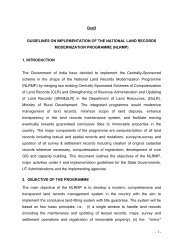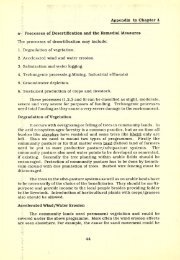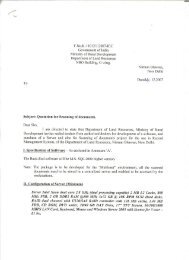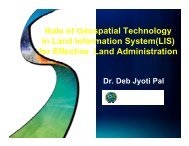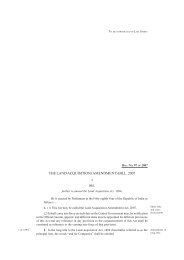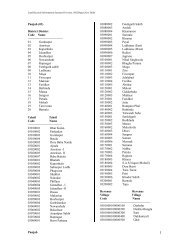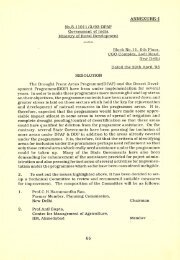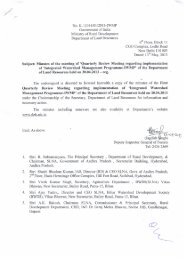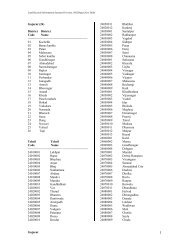Uttarakhand - Department of Land Resources
Uttarakhand - Department of Land Resources
Uttarakhand - Department of Land Resources
You also want an ePaper? Increase the reach of your titles
YUMPU automatically turns print PDFs into web optimized ePapers that Google loves.
The State supports about 4.75 million livestock population out <strong>of</strong> which about 21.3<br />
lakh are cattle, 11.00 lakh are buffaloes, 3.60 lakh are sheep and 10.97 lakh are<br />
goats. As much as 36.5% <strong>of</strong> the population <strong>of</strong> the state lives under poverty line.<br />
Three hill districts, i.e., Chamoli, Tehri Garhwal and Uttarkashi have more than 45%<br />
<strong>of</strong> their population below poverty line while the other districts have around 30-40% <strong>of</strong><br />
population below the poverty line. Another important aspect <strong>of</strong> poverty distribution is<br />
that poverty is more pronounced amongst some disadvantaged groups as<br />
Scheduled Castes and Scheduled Tribes, where 44% <strong>of</strong> families are below poverty<br />
line. Inequalities are also evident in other parameters <strong>of</strong> poverty, such as literacy and<br />
nutrition levels. For example literacy rate is 84.01% for males and 60.26% for<br />
females. In case <strong>of</strong> urban areas male literacy is 87.21% against a female literacy<br />
rate <strong>of</strong> 74.78%. It is comparatively lower in the case <strong>of</strong> rural areas with figures <strong>of</strong><br />
82.74% and 55.52% for male and female respectively. Literacy rates in case <strong>of</strong><br />
Scheduled Castes people are even further low with 46% and 20% for males and<br />
females respectively.<br />
About 70% <strong>of</strong> hills population is engaged in agriculture. There is hardly any other<br />
major source <strong>of</strong> livelihood deriving from the secondary or tertiary sectors. These<br />
sectors are very poorly developed primarily because <strong>of</strong> inaccessibility and<br />
vulnerability <strong>of</strong> mountain regions. Although almost 70% <strong>of</strong> the population is<br />
dependent <strong>of</strong> the primary sectors, the contribution <strong>of</strong> this sector <strong>of</strong> the GDP/NDDP is<br />
only 37.5. As a result, it does not provide sufficient income levels to the people. This<br />
subsistence nature, which leads to low incomes and unstable incomes, which in turn<br />
lead to a sizeable out-migration <strong>of</strong> male members that leads to only women headed<br />
families behind, and the role <strong>of</strong> women in the household economy becomes more<br />
important.<br />
Because <strong>of</strong> the extraction <strong>of</strong> natural resources by the inhabitants for subsistence<br />
living far beyond their capacity to regenerate, many areas <strong>of</strong> the state are facing<br />
degradation <strong>of</strong> natural resources. For example, against the requirement <strong>of</strong> 18 ha <strong>of</strong><br />
forests land including 5-12 ha <strong>of</strong> well-stocked forests, per ha <strong>of</strong> cultivated land, the<br />
ratio <strong>of</strong> forest to agriculture is only 1.33:1 and the ratio <strong>of</strong> well-stocked forests to<br />
agricultural land is only 0.84:1. Further, soil erosion from the different land use<br />
3





